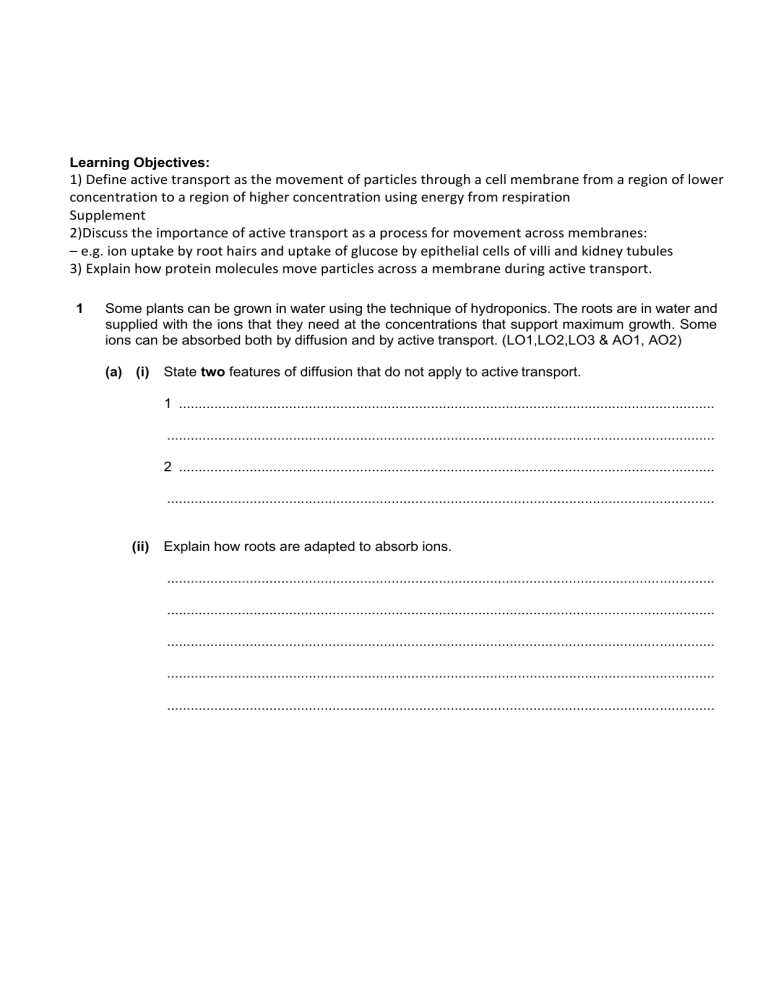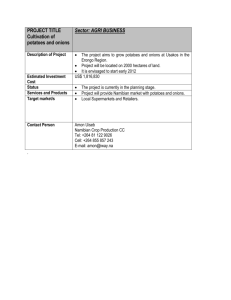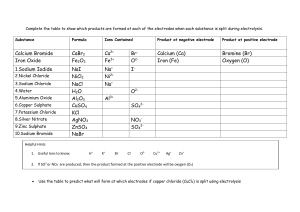
Learning Objectives: 1) Define active transport as the movement of particles through a cell membrane from a region of lower concentration to a region of higher concentration using energy from respiration Supplement 2)Discuss the importance of active transport as a process for movement across membranes: – e.g. ion uptake by root hairs and uptake of glucose by epithelial cells of villi and kidney tubules 3) Explain how protein molecules move particles across a membrane during active transport. 1 Some plants can be grown in water using the technique of hydroponics. The roots are in water and supplied with the ions that they need at the concentrations that support maximum growth. Some ions can be absorbed both by diffusion and by active transport. (LO1,LO2,LO3 & AO1, AO2) (a) (i) State two features of diffusion that do not apply to active transport. 1 ........................................................................................................................................ ........................................................................................................................................... 2 ........................................................................................................................................ ........................................................................................................................................... (ii) Explain how roots are adapted to absorb ions. ........................................................................................................................................... ........................................................................................................................................... ........................................................................................................................................... ........................................................................................................................................... ........................................................................................................................................... A group of students investigated the effect of soaking small onion bulbs in different concentrations of sodium chloride solution. They peeled off the outer papery leaves of the onion bulbs and divided the onions into 6 batches, each with 10 onions. The onions were surface dried with paper towels and weighed. The mean mass of the onions in each batch was calculated. The onions were then left in sodium chloride solutions for three hours. After three hours the students surface dried the onions and weighed them again. Their results are given in Table 2.1. Table 1.1 concentration of sodium chloride solution / g dm– percentage change in mass before soaking after soaking for 3 hours 0 147 173 +17.7 25 153 165 +7.8 50 176 172 –2.3 100 154 149 –3.2 150 149 142 –4.7 200 183 175 _6.4 3 (b) (i) mean mass of onions / g Calculate the percentage change in mass of the onions that were in the most concentrated solution of sodium chloride. Show your working. Write your answer in Table 2.1. (LO1,LO2,LO3 & AO1, AO2) (ii) Explain why the students calculated the percentage change in mass of the onions. (LO1,LO2,LO3 & AO1, AO2) ........................................................................................................................................... ........................................................................................................................................... ........................................................................................................................................... ........................................................................................................................................... . percentage change in mass 20 15 10 5 0 50 100 150 200 –5 –10 concentration of sodium chloride solution / g dm–3 Fig. 1.1 (i) Complete the graph using your answer to (b)(i). (ii) Use the graph in Fig. 2.1 to estimate the concentration of the sodium chloride solution that has the same water potential as the onions. ........................................................................................................................................... 2 (d) Using the term water potential, explain why the onions: gained mass when soaked in dilute solutions of sodium chloride (LO1,LO2,LO3 & AO1, AO2) ................................................................................................................................................... ................................................................................................................................................... ................................................................................................................................................... ................................................................................................................................................... lost mass when soaked in concentrated solutions of sodium chloride. ................................................................................................................................................... ................................................................................................................................................... ................................................................................................................................................... ...................................................................................................................................................





